#a pixel patchwork project
Note
have you considered doing like. idk the term for it but like pixel art in crochet of the Pokémon? not all of them obviously cause like you're already doing that in 3d but like maybe as patchwork blanket or smthn. idk if that's super hard tho fhsgshsjsj I've only ever crocheted like. teddy clothes and orbs
Ooh yeah I know what you mean, the flat crochets with designs that are like the Pokemon sprites! I think they look neat, but no, I don't want to do them myself. I think for the pixel art crochets of Pokemon you can recreate them pixel-by-pixel stitch-by-stitch, and a lot of the fun for me with this project is translating the design from the 3D models
8 notes
·
View notes
Text
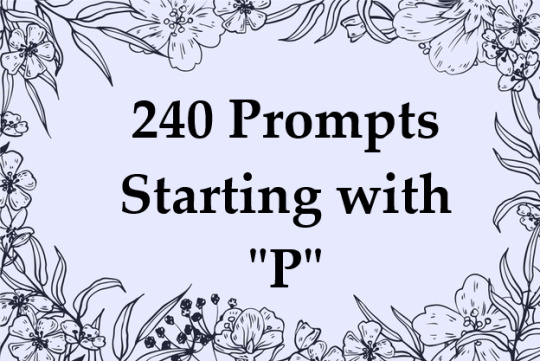
1. Pacifier
2. Package
3. Pact
4. Padlock
5. Pages
6. Paid
7. Painful
8. Paint
9. Palace
10. Paladins
11. Pampered
12. Pancakes
13. Pandemonium
14. Panic
15. Paparazzi
16. Papercut
17. Paradise
18. Paradox
19. Parallel
20. Parallel
21. Paranoia
22. Paranormal
23. Parasite
24. Parenthood
25. Park
26. Parking
27. Parlour
28. Parodies
29. Particular
30. Parties
31. Parting
32. Partner
33. Passenger
34. Passing
35. Passion
36. Passive
37. Password
38. Past
39. Patchwork
40. Pathetic
41. Pathology
42. Pathways
43. Patience
44. Patient
45. Patrolling
46. Patronage
47. Pattern
48. Pause
49. Paved
50. Pawn
51. Payback
52. Payment
53. Peaceful
54. Peach
55. Pearl
56. Pedal
57. Pedestals
58. Pedigree
59. Peeping
60. Pegasus
61. Penalty
62. Pendulum
63. Pentacle
64. Peppermint
65. Perception
66. Perchance
67. Perfectionist
68. Performance
69. Perfume
70. Perish
71. Periwinkle
72. Perks
73. Permanent
74. Permission
75. Persistence
76. Personal
77. Perspective
78. Persuasion
79. Perversion
80. Pessimistic
81. Pestilence
82. Petals
83. Petitions
84. Petty
85. Phantom
86. Pharaoh
87. Phenomenon
88. Phoenix
89. Phone
90. Photograph
91. Physical
92. Piano
93. Picnic
94. Picture
95. Piece
96. Piercing
97. Pilgrimage
98. Pillars
99. Pillow
100. Pinch
101. Pinpricks
102. Pirate
103. Pity
104. Pivot
105. Pixel
106. Pixie
107. Pizza
108. Plague
109. Plain
110. Plane
111. Planet
112. Planetarium
113. Planning
114. Plastic
115. Plateau
116. Platform
117. Player
118. Playful
119. Playground
120. Pleasant
121. Pleasurable
122. Plenty
123. Plight
124. Plotting
125. Plucked
126. Pocket
127. Poetry
128. Point
129. Pointless
130. Poisonous
131. Poke
132. Polaris
133. Police
134. Policy
135. Polished
136. Ponder
137. Pool
138. Poor
139. Popsicle
140. Popularity
141. Porcelain
142. Portal
143. Portrait
144. Positions
145. Positive
146. Possession
147. Possibilities
148. Postcard
149. Poster
150. Potato
151. Potential
152. Potion
153. Powerful
154. Powerless
155. Practical
156. Practice
157. Praise
158. Prank
159. Precarious
160. Precious
161. Precision
162. Precursor
163. Predator
164. Predestined
165. Predictability
166. Preference
167. Premise
168. Premonition
169. Preparation
170. Presence
171. Present
172. Pressure
173. Prestige
174. Pretence
175. Pretend
176. Pretty
177. Prevail
178. Preview
179. Price
180. Priceless
181. Pride
182. Primal
183. Primrose
184. Principles
185. Priorities
186. Prism
187. Prison
188. Prisoner
189. Private
190. Privilege
191. Prize
192. Problem
193. Proclaimed
194. Procrastinate
195. Prodigal
196. Professor
197. Profile
198. Profit
199. Prognosis
200. Programming
201. Progress
202. Prohibited
203. Project
204. Prom
205. Promiscuous
206. Promise
207. Promotional
208. Proof
209. Property
210. Prophecies
211. Proposal
212. Proposition
213. Protagonist
214. Protect
215. Prototype
216. Proud
217. Prove
218. Providence
219. Proximity
220. Pseudonym
221. Psyche
222. Psychic
223. Psycho
224. Publicity
225. Puddles
226. Pulled
227. Pulse
228. Pumpkin
229. Punching
230. Punctuality
231. Punished
232. Puppet
233. Purgatory
234. Purify
235. Pursuit
236. Pushover
237. Puzzle
238. Pyjamas
239. Pyramid
240. Pyromania
#prompts#writing prompts#story prompts#writblr#writing prompt list#prompt list#writing prompt#story prompt#writing inspiration#story inspiration#fanfic prompts#fanfiction prompts#fic prompt#fanfiction#fanfic prompt
2 notes
·
View notes
Text

Tracking the Invisible Movement of Water
As the world looks for sustainable solutions, a system tapping into NASA satellite data for water management has passed a critical test.
Called OpenET, the system uses an ensemble of six satellite-driven models that harness publicly available data from the Landsat program to calculate evapotranspiration (ET)—the movement of water vapor from soil and plant leaves into the atmosphere. OpenET does this on a field-level scale that is greatly improving the way farmers, ranchers, and water resource managers steward one of Earth’s most precious resources.
Researchers recently conducted a large-scale analysis of how well OpenET is tracking evapotranspiration over crops and natural landscapes. The team compared OpenET data with measurements from 152 sites with ground-based instruments across the United States. In agricultural areas, OpenET calculated evapotranspiration with high accuracy, especially for annual crops such as wheat, corn, soy, and rice.
“I was pleasantly surprised by the results,” said John Volk, lead author of the study and assistant research scientist and software engineer at the Desert Research Institute in Reno, Nevada. “The accuracy in croplands was quite strong, particularly in western arid regions, which are important areas for agriculture and have water sustainability challenges.”
That’s welcome news for regions where OpenET data is already being put to work. In Northern California’s Sacramento-San Joaquin Delta, water resource managers are using OpenET to help farmers comply with state rules requiring them to report aspects of their water use.
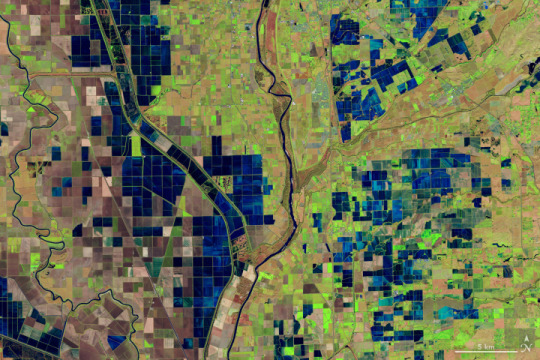
The map at the top of this page is derived from the OpenET data explorer. It shows cumulative evapotranspiration for 2023 in California’s Central Valley, including the Sacramento-San Joaquin Delta. Colors represent the total evapotranspiration as the equivalent depth of water in millimeters. Dark blue areas are where evapotranspiration is the highest—up to at least 475 millimeters (18.7 inches) over the course of the year. These regions usually have dense vegetation or irrigated fields.
While many people are familiar with what one inch of rainfall means, few stop to think about one inch of evapotranspiration returning to the atmosphere, said Forrest Melton, the OpenET project scientist at NASA’s Ames Research Center in California’s Silicon Valley. “OpenET is working to make the unseen process of evapotranspiration as easy to track as checking the amount of rainfall in the daily weather forecast.”
OpenET’s primary observations come from the Landsat 8 and 9 satellites, a partnership between NASA and the U.S. Geological Survey. The second image above, acquired with the OLI (Operational Land Imager) on Landsat 8, highlights a patchwork of flooded rice fields along the Sacramento and Feather rivers on December 26, 2018. In this false-color image, inundated fields appear dark blue and vegetation is bright green.
The Landsat satellites also provide data on land surface temperatures and the greenness of plants, among other things. Cooler land surface temperatures over areas with healthier, denser vegetation, for example, usually indicate higher levels of transpiration. Those data are then fed into models to calculate evapotranspiration at high resolution—about a quarter of an acre for each image pixel.
The new analysis of OpenET’s performance, published January 15 in Nature Water, shows that for agricultural lands, OpenET data for monthly, growing season, and annual timescales had an average error rate of about 10-20 percent. Lindsay Kammeier, a senior engineer with the California State Water Board in Sacramento and not involved in the study, said the result “gives us more confidence that these numbers are accurate, and that OpenET is continually improving over time.”
Maps by NASA Earth Observatory, using data provided by the OpenET team at NASA and the Desert Research Institute, available at openetdata.org and described in research by Volk, J.M. et al. Landsat image by Lauren Dauphin using data from the U.S. Geological Survey. The OpenET consortium includes NASA, USGS, and the U.S. Department of Agriculture working with the Desert Research Institute and nearly a dozen other universities, Environmental Defense Fund, and Google Earth Engine. Story by Emily DeMarco (NASA Earth Science Division) adapted for Earth Observatory by Kathryn Hansen.
1 note
·
View note
Text
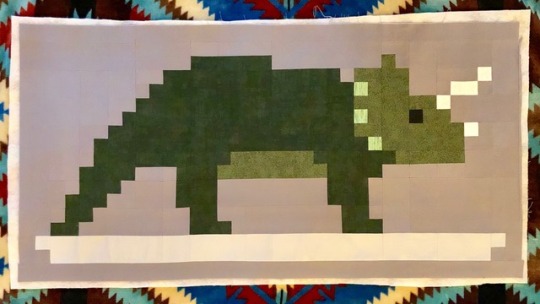
Still a WIP, but holy smokes a breakthrough! I can now do pixel patchworks a little faster than before. What would take me a month only now takes me about two weeks.
A triceratops pixel sprite from the game Super Amazing Wagon Adventure: The Wild, Wild Weird.
#ladyjuxtaposition talks#and sews#once again#a pixel patchwork project#that is twice as fast to patch up this#and also#that game is so inspiring to make pixel patchworks#thank you#super amazing wagon adventure the wild wild weird#triceratops#pixels#pixel art#fabric#pattern#handmade things#sewing things#wip#ladyjuxtaposition#sewn by ladyjuxtaposition#to be continued#hype
4 notes
·
View notes
Text
glaive and ericdoa Continue to Break the Mold on ‘then I’ll be happy’

Photo: Aidan Cullen
In another world, glaive and ericdoa never would have met nor would the music they’re making even be considered a possibility. It’s a testament to the power of the internet and how it has not only shaped music but shaped our understanding of what music can be. All of this culminates in their joint EP, then i’ll be happy.
glaive, who grew up in the mountains of North Carolina, and ercidoa, who grew up in a small town in Connecticut, are two artists at the forefront of hyperpop, a genre defined by its abrasive, reckless, and forward-thinking approach to pop. Hyperpop itself is a patchwork genre with roots in everything from UK underground trendsetters PC Music to the somber and woozy stylings of emo-rap that took the world by storm a few days prior. It’s the perfect foundation for two artists in the midst of coming-of-age, who have spent the better part of their budding music careers trading ideas and inspirations with an unabashed passion.
“then i’ll be happy was made over the last year and was recorded in everything from a studio to a tiny Airbnb bedroom. I’m lucky to have found such a great collaborator and friend in Eric and love what we made together,” shares glaive. Eric adds, “The process of making this project was great because I got to experience new places and new people. I got to grow up alongside somebody who is also growing up, who is also my best friend. Ash and I are going up this year and I’m glad we have each other to lean on during this crazy time for both of us.”
then i’ll be happy will likely fall into the popular lexicon that is “hyperpop,” but its eight tracks see ericdoa and glaive experimenting with a host of adventurous, wide-ranging sonic textures that defy simple classification. And while fans of the duo’s trademark racing BPM pleas to love, be loved, to hate, and be hated need to look no further than tracks like “mental anguish” and the previously-released “cloak n dagger” and “fuck this town,” then i’ll be happy brilliantly avoids the pitfalls of being hailed as genre leaders. “heathers” falls more in line with the driving, pixelated soundscape that defines digicore, while a track like “pretending,” with its iridescent, disco-inspired groove marks a noted sonic departure for the duo.
On their first, and likely not last, joint project glaive and ericdoa cement their place not just in the world of hyperpop but music at large. Infectious as it is emotionally raw and vulnerable, then I’ll be happy demands every ounce of your attention.
Listen to then i’ll be happy below:
7 notes
·
View notes
Note
1, 2, 14 for the crochet/knitting ask game :)
1. Crochet or knitting
This feels a bit blasphemous because I was crochet-only for such a long time, but I'm going to have to go with knitting! I think it has more to do with the fact that my future project list is almost exclusively knits, rather than an actual preference. Both have their place, but I'm more interested in growing my knitting repertoire at the moment!
2. Favorite yarn type
Ooh, well, I'm not sure I do enough of either to actually have developed a material/brand preference. It looks like I've used mostly acrylics, though I've also dabbled in wool and cotton (actually, cotton might be my preferred yarn for crocheting flowers? I found that out completely by accident!).
I did make a scarf a couple years ago with some of the softest yarn! It was an acrylic called Red Heart Unforgettable, and I would love an excuse to work with it again! I guess the yarn is living up to its name XD
(Here is the scarf pattern I followed, btw. B. Hooked has been one of my go-tos for browsing cool stitches and small crochet projects!)
14. Dream project
As it turns out, I maintain a whole list of dream/future projects! Most take the form of something (slightly) practical with a nerdy inspiration, color scheme, or embellishment. I do want to grow my skills, but I also want to keep practicing the basics, so right know that means making different types of things while adding a new stitch type/technique or two. All of these projects still require a non-insignificant amount of planning, which is one reason they’re still theoretical at this point (the other reason is time/other priorities):
Patchwork shawl (Clue, Sailor Moon, or Digimon-inspired)
Decorative pillow cover (Digimon, Sailor Moon, or Utena-inspired)
Mittens (Appmon-inspired) ask me about the matching hat
Reverse engineering a couple of winter hats (one warm, fuzzy chonker with no fandom association, one that approximately recreates this hat on the left from Laid-Back Camp:)

Actually, something that I was thinking about last night that would be interesting(/challenging) to do is an oversized pastel eighties sweater. Maybe something like that would help soothe the savage beast in my soul that occasionally clamors for retro pixel/vaporware aesthetic (seems rude to call it a savage beast... it's almost certainly just the voice of my inner Mabel Pines).

Thanks for the asks! You can find the original meme here.
#the cactus speaks#about me#arts and crafts#ask meme#the cactus plots hare-brained schemes and wild ideas
3 notes
·
View notes
Text

One Project i worked on is (nearly) finished. Well at least the top is finished! I have to wait for some days, so i have enough place again to finish this blanket.
The Pattern is a free pattern and it's the Pixelated Rose by @rileyblakedesigns
[Picture: The finished Top of a patchwork blanket /quilt. You can see a pixelated Rose in red and green tones on a black backround with a rose border.]
#sewing#sewingblogger#sewingblog#nähblogger#nähblog#nähen#sewist#sewcialist#patchworkdecke#patchworkblanket#patchwork#quilt/patchwork#quilting#quilt
43 notes
·
View notes
Photo


Architecture | Rafael Moneo:
Flashbacks to Brick Virtuosity in Mérida and Madrid 05.20.15
My thanks to ArchDaily for spotlighting Rafael Moneo’s National Museum of Art in Mérida, Spain in their AD Classics series. As much as a fan as I am of Moneo’s talent, this building was a new discovery. Moneo was commissioned in 1979, as part of the Spanish government’s celebration of the bimillennial anniversary of the founding of Emerita, Augusta. It replaced an 1838 museum on the same site, built in the middle of one of the largest and best preserved Roman cities in Western Europe, immediately next to one of the most spectacular surviving ancient theaters in the world. The museum opened in 1986 to critical acclaim.
Click to see a larger image.
It is one of the finest contemporary brick buildings to date and an exceptionally sensitive space to show Roman antiquities. Seeing as new museums is the architecture profession’s least successful genre, it is a pleasure to encounter one that is so free of ego and competiveness that too often comes with these commissions. For contrast, I’m reminded, painfully, of a recent extension at the Denver Art Museum, an example of architectural overreach that creates a hostile place for the art to live (or, more often in this case, to die).
There is not an artifact that does feel warmer or richer for it contrast against the brick. And the soaring spaces, seemingly too large, create a sense of a stirring epic moment in time. There is also something egalitarian about the brick and its workmanlike presence that takes away from the austere-white-marble-box-temple-aesthetic so often chosen for museums.
Click to see larger images.
Finally, the building material gives seeming authenticity; it links the art on view with the superb brickwork of ancient Roman builders all over Mérida. Even today “Roman brick” is used as the title for bricks that are based on Roman standards, standards that Moneo has followed in spirit but not stylistically.
Click to see a larger image.
The article ArchDaily comments on his imaginative use of use of brick and light:
Thin, elongated brickwork, distinctly non-Roman in its shape and perfect uniformity, gives the museum its trademark appearance. Walls, columns, and arches are made of the same material, but the appearance is far from monotonous; patchworks of gold and red hues paint the walls in pixelated clusters of color, lit afire by the dramatic overhead lighting. For Moneo, whose body of work displays remarkable stylistic variation, it is perhaps this careful and deliberate control of daylight that makes this building characteristically his. As Robert Campbell wrote in a Pritzker retrospective of the architect, “the handling of the interior daylight is masterful, here an ever-changing golden wash. The light contrasts with the ghostly paleness, therefore the pastiness, of the antiquities on display.”
Arches have long been used to mark the greatest achievements of Roman civilization. Constantine, Titus, and Septimus Severus built them to commemorate their military victories. Engineers at Segovia and Nîmes incorporated them into their revolutionary aqueducts. And fifteen hundred years after the Fall of Rome, Rafael Moneo gave a modern touch to the ancient structure in Mérida’s breathtaking National Museum of Roman Art, located on the site of the former Iberian outpost of Emerita Augusta. Soaring arcades of simple, semi-circular arches merge historicity and contemporary design, creating a striking yet sensitive point of entry to the remains of one of the Roman Empire’s greatest cities.
Click to see larger images.
The small bricks returned when Moneo was invited to design the extension to the Prado in Madrid. Completed in 2007 it was hugely controversial as Helen Zuber explained De Spiegel.
Moneo has been fiercely criticized for his project, which took six years to complete. The costs soared until they reached the final sum of €152 million ($219 million) — more than three-and-a-half times the original budget. The architect has modestly hidden his creation behind the Prado’s historical wing so that only visitors entering the museum through the back entrance can see it from outside. The size of the Prado has increased by more than a half thanks to the addition of four exhibition halls, an auditorium, workshops facing the cloister and an archive.
Moneo has “distanced himself from the trend towards spectacular buildings” — such as the glass pyramid built in the Louvre’s courtyard in Paris by I.M. Pei or Norman Foster’s sophisticated steel-and-glass addition to the British Museum in London — says Spain’s most renowned art critic, Francisco Calvo Serraller, in defense of the new building. Moneo has found “the most admirable solution” for Madrid, in Serraller’s view, by opting for avant-garde architecture instead of mere imitation.
The building is built with materials, including bricks that were used in the original Prado buildings, and while it has bulk it’s characterized by modesty. It also allowed for Moneo to create a wonderful esplanade of hedges in a cross-hatch maze. Both are high points for brick in architecture and, to bring the inside and outside together, many of the galleries inside have rich brick-red painted walls.
Garth Clark is the Chief Editor of CFile
Any thoughts about this post? Share yours in the comment box below.
The National Museum of Roman Art in Mérida, Spain by Rafael Moneo.
Click to see a larger image.
The Prado in Madrid by Rafael Moneo. Click to see a larger image.
Moneo’s drawings for the Roman Museum.
Filed Under: All Topics, Architecture, Brick Tagged With: madrid, mérida, rafael moneo
Bill Rodgers
Bill Rodgers is a reformed journalist living in Santa Fe, New Mexico. A lover of nontraditional storytelling, he explores the role of narrative in art. Bill is Managing Editor of cfile.
https://cfileonline.org/architecture-rafael-moneo-flashbacks-to-brick-virtuosity-in-merida-and-madrid/
2 notes
·
View notes
Photo
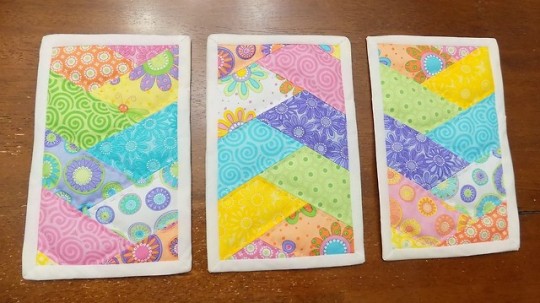


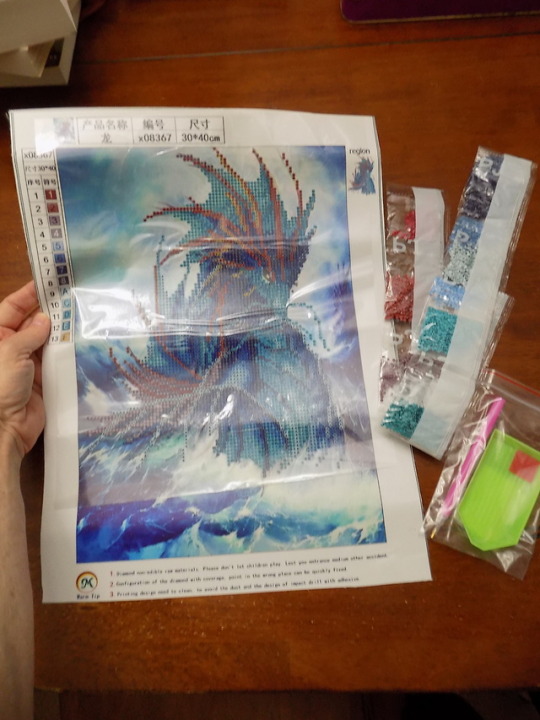
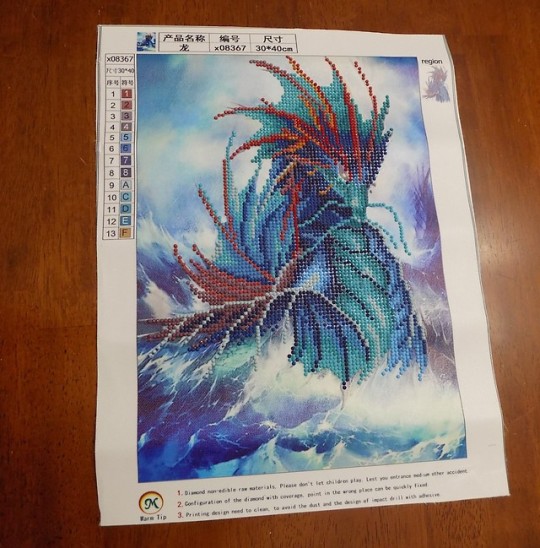
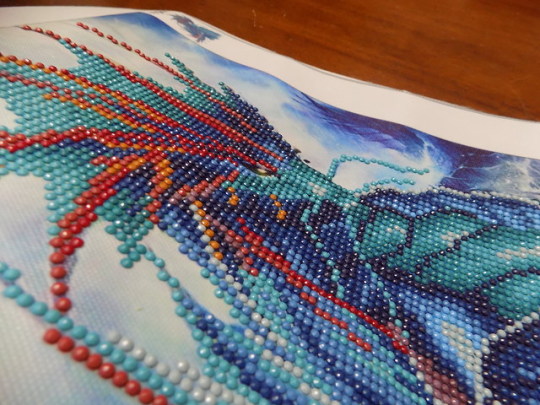


Back from hiatus. The surgery went as expected, and I’m slowly but surely healing. During my downtime I worked on a bunch of small projects, quilting three mug rugs (pic#1) and two snack mats (pics #2-3) that I got in an orphan patchwork block lot from KnJ Studio.
Out of curiosity I also gave diamond painting a go (pics #4-7). This was a trendy craft I heard about last year, which is a bit like paint by number or cross stitch. You get a canvas covered with adhesive and pixelated codes, and have to apply resin “diamonds” to it.
I did a small partial round drill painting of a dragon, purchased from Our Craft Addictions on Etsy. It was interesting, and I thought the results came out okay. Not really my cup of tea, although I can see how people become addicted to the calming aspects. The kits are also fairly inexpensive if you shop around Etsy or order from Amazon.
Finally I’m working on a small patchwork wall quilt of a tree (pic #8; patchwork also by KnJ) that will likely become a holiday gift.
13 notes
·
View notes
Text
Social media must add a do-not-track option for images of our faces
Facial recognition systems are a powerful AI innovation that perfectly showcase The First Law of Technology: “technology is neither good nor bad, nor is it neutral.” On one hand, law-enforcement agencies claim that facial recognition helps to effectively fight crime and identify suspects. On the other hand, civil rights groups such as the American Civil Liberties Union have long maintained that unchecked facial recognition capability in the hands of law-enforcement agencies enables mass surveillance and presents a unique threat to privacy.
Research has also shown that even mature facial recognition systems have significant racial and gender biases; that is, they tend to perform poorly when identifying women and people of color. In 2018, a researcher at MIT showed many top image classifiers misclassify lighter-skinned male faces with error rates of 0.8% but misclassify darker-skinned females with error rates as high as 34.7%. More recently, the ACLU of Michigan filed a complaint in what is believed to be the first known case in the United States of a wrongful arrest because of a false facial recognition match. These biases can make facial recognition technology particularly harmful in the context of law-enforcement.
One example that has received attention recently is “Depixelizer.”
VB Transform 2020 Online – July 15-17. Join leading AI executives: Register for the free livestream.
The project uses a powerful AI technique called a Generative Adversarial Network (GAN) to reconstruct blurred or pixelated images; however, machine learning researchers on Twitter found that when Depixelizer is given pixelated images of non-white faces, it reconstructs those faces to look white. For example, researchers found it reconstructed former President Barack Obama as a white man and Representative Alexandria Ocasio-Cortez as a white woman.
An image of @BarackObama getting upsampled into a white guy is floating around because it illustrates racial bias in #MachineLearning. Just in case you think it isn’t real, it is, I got the code working locally. Here is me, and here is @AOC. pic.twitter.com/kvL3pwwWe1
— Robert Osazuwa Ness (@osazuwa) June 20, 2020
While the creator of the project probably didn’t intend to achieve this outcome, it likely occurred because the model was trained on a skewed dataset that lacked diversity of images, or perhaps for other reasons specific to GANs. Whatever the cause, this case illustrates how tricky it can be to create an accurate, unbiased facial recognition classifier without specifically trying.
Preventing the abuse of facial recognition systems
Currently, there are three main ways to safeguard the public interest from abusive use of facial recognition systems.
First, at a legal level, governments can implement legislation to regulate how facial recognition technology is used. Currently, there is no US federal law or regulation regarding the use of facial recognition by law enforcement. Many local governments are passing laws that either completely ban or heavily regulate the use of facial recognition systems by law enforcement, however, this progress is slow and may result in a patchwork of differing regulations.
Second, at a corporate level, companies can take a stand. Tech giants are currently evaluating the implications of their facial recognition technology. In response to the recent momentum of the Black Lives Matter movement, IBM has stopped development of new facial recognition technology, and Amazon and Microsoft have temporarily paused their collaborations with law enforcement agencies. However, facial recognition is not a domain limited to large tech firms anymore. Many facial recognition systems are available in the open-source domains and a number of smaller tech startups are eager to fill any gap in the market. For now, newly-enacted privacy laws like the California Consumer Privacy Act (CCPA) do not appear to provide adequate defense against such companies. It remains to be seen whether future interpretations of CCPA (and other new state laws) will ramp up legal protections against questionable collection and use of such facial data.
Lastly, people at an individual level can attempt to take matters into their own hands and take steps to evade or confuse video surveillance systems. A number of accessories, including glasses, makeup, and t-shirts are being created and marketed as defenses against facial recognition software. Some of these accessories, however, make the person wearing them more conspicuous. They may also not be reliable or practical. Even if they worked perfectly, it is not possible for people to have them on constantly, and law-enforcement officers can still ask individuals to remove them.
What is needed is a solution that allows people to block AI from acting on their own faces. Since privacy-encroaching facial recognition companies rely on social media platforms to scrape and collect user facial data, we envision adding a “DO NOT TRACK ME” (DNT-ME) flag to images uploaded to social networking and image-hosting platforms. When platforms see an image uploaded with this flag, they respect it by adding adversarial perturbations to the image before making it available to the public for download or scraping.
Facial recognition, like many AI systems, is vulnerable to small-but-targeted perturbations which, when added to an image, force a misclassification. Adding adversarial perturbations to facial recognition systems can stop them from linking two different images of the same person1. Unlike physical accessories, these digital perturbations are nearly invisible to the human eye and maintain an image’s original visual appearance.
(Above: Adversarial perturbations from the original paper by Goodfellow et al.)
This approach of DO NOT TRACK ME for images is analogous to the DO NOT TRACK (DNT) approach in the context of web-browsing, which relies on websites to honor requests. Much like browser DNT, the success and effectiveness of this measure would rely on the willingness of participating platforms to endorse and implement the method – thus demonstrating their commitment to protecting user privacy. DO NOT TRACK ME would achieve the following:
Prevent abuse: Some facial recognition companies scrape social networks in order to collect large quantities of facial data, link them to individuals, and provide unvetted tracking services to law enforcement. Social networking platforms that adopt DNT-ME will be able to block such companies from abusing the platform and defend user privacy.
Integrate seamlessly: Platforms that adopt DNT-ME will still receive clean user images for their own AI-related tasks. Given the special properties of adversarial perturbations, they will not be noticeable to users and will not affect user experience of the platform negatively.
Encourage long-term adoption: In theory, users could introduce their own adversarial perturbations rather than relying on social networking platforms to do it for them. However, perturbations created in a “black-box” manner are noticeable and are likely to break the functionality of the image for the platform itself. In the long run, a black-box approach is likely to either be dropped by the user or antagonize the platforms. DNT-ME adoption by social networking platforms makes it easier to create perturbations that serve both the user and the platform.
Set precedent for other use cases: As has been the case with other privacy abuses, inaction by tech firms to contain abuses on their platforms has led to strong, and perhaps over-reaching, government regulation. Recently, many tech companies have taken proactive steps to prevent their platforms from being used for mass-surveillance. For example, Signal recently added a filter to blur any face shared using its messaging platform, and Zoom now provides end-to-end encryption on video calls. We believe DNT-ME presents another opportunity for tech companies to ensure the technology they develop respects user choice and is not used to harm people.
It’s important to note, however, that although DNT-ME would be a great start, it only addresses part of the problem. While independent researchers can audit facial recognition systems developed by companies, there is no mechanism for publicly auditing systems developed within the government. This is concerning considering these systems are used in such important cases as immigration, customs enforcement, court and bail systems, and law enforcement. It is therefore absolutely vital that mechanisms be put in place to allow outside researchers to check these systems for racial and gender bias, as well as other problems that have yet to be discovered.
It is the tech community’s responsibility to avoid harm through technology, but we should also actively create systems that repair harm caused by technology. We should be thinking outside the box about ways we can improve user privacy and security, and meet today’s challenges.
Saurabh Shintre and Daniel Kats are Senior Researchers at NortonLifeLock Labs.
Source
The post Social media must add a do-not-track option for images of our faces appeared first on abangtech.
from abangtech https://abangtech.com/social-media-must-add-a-do-not-track-option-for-images-of-our-faces/
0 notes
Text
Fashion Tips: Designing at Home
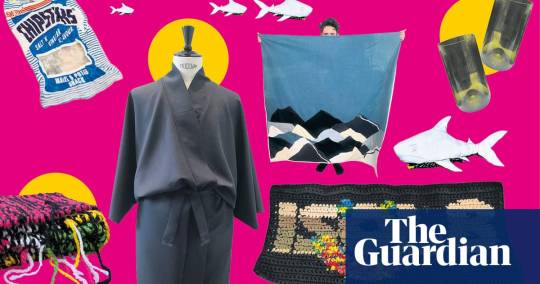
Sew a patchwork quilt with Next in Fashion’s Daniel Fletcher
Creative director and star of Netflix’s Next in Fashion, Daniel W Fletcher has plenty to get on with while in social isolation, designing a collection for Fiorucci as well as one for his own brand. In his down time, he is taking up a DIY challenge to make a patchwork quilt based on a dress he made during the filming of Next in Fashion, using other designers’ leftover scraps. The design – inspired by concerns over the melting polar ice caps – is an arctic landscape.
Facebook Twitter Pinterest
“Ever since the show, I’ve been inundated with requests to make similar quilted items, so I thought this was a good opportunity to show people how they can do so themselves.
“You can make it from any leftover fabrics you have. This time, I used some leftover damaged denim from my studio as the quilt base. I don’t imagine everyone has that lying around so use what you have.
“Heavier is better for the base so it can hold the appliqué – maybe some old curtains or an existing blanket that needs some love. If you don’t have enough to do a blanket, you could use the same technique to make a cushion. For the appliqué, it could be old clothes, tablecloths, tea towels – anything you can get your hands on.
“I went quite abstract with my pattern, but you could come up with a more elaborate design.
“Mine took me five hours on a sewing machine. You could hand sew it instead. It’s going to be a much longer process but could be very therapeutic, which is something we could all do with right now.”
Facebook Twitter Pinterest
Difficulty level: intermediate
Equipment needed: an old blanket (or similar), scraps of fabrics, thread and needle
How to:
“For the nitty-gritty, head over to my Instagram – my wonderful sister captured the whole process.”
A post shared by DANIEL w. FLETCHER (@danielwfletcher) on Mar 27, 2020 at 12:52pm PDT
Crochet a small rug with menswear designer Liam Hodges
Facebook Twitter Pinterest
Liam Hodges has recently moved house, so his time in self isolation has been spent unpacking and making rugs.
“I learnt to crochet last October and have found it really relaxing. For our AW20 collection, we crocheted a lot of squares as embellishments. I’ve kept it up and even tried to make a skipping rope when I first went into isolation.
“I had been wanting to make some rag rugs and started working out how to crochet graphics into them. I made the graphic in Photoshop so that each pixel represented each crochet stitch.
Facebook Twitter Pinterest
“I thought doormat-size was perfect. I have mine by the door to remind me to keep positive and take the [government] advice about staying in seriously.
“It took me around two and a half hours to complete and is made up of old, shredded T-shirts for the coloured section and yarn made using Wool and the Gang offcuts for the main black areas, so it is entirely made from waste.”
Difficulty level: intermediate
Equipment needed: an old T-shirt, a crochet hook, yarn and scissors
How to:
“Use our how-to digital zine on Instagram, which has the pattern as well as instructions on how to crochet.”
A post shared by LIAM HODGES (@liam__hodges) on Mar 27, 2020 at 4:56am PDT
Sew a shark mascot with designer Christopher Raeburn
Facebook Twitter Pinterest
Designer Christopher Raeburn’s team are adapting to the current situation by releasing weekly creative tasks via their #RaeburnAtHome initiative.
“This project is to make one of our shark mascots. We have always featured animals in our collections, initially as a way to highlight and support endangered species through our WWF UK partner. The Shark is one of our most popular animals; we keep it in our collections each season, but it always evolves.
“You need no more than one square metre of fabric – even less if you are conscious of pattern placement for waste reduction. Using a variety of smaller cuts of fabric is encouraged though as this adds pops of colour and texture to the final shark.
“Not only is reusing and repurposing old fabric a more interesting way of working, but extending the lifetime of garments is instrumental in reducing planetary impact. When people are spending more time at home than ever before, now is the chance to pull out those bits that we no longer use and give them new life.
“Unless you are an absolute master, it should keep you busy for about 10 hours. We only recommend a sewing machine for ease and speed – top marks for effort go to anyone tackles it by hand.”
Difficulty level: advanced
Equipment needed: a sewing machine, fabric, scissors, thread and paper.
How to:
Sew a kimono-inspired garment with designer Edward Crutchley
Facebook Twitter Pinterest
Designer Edward Crutchley’s lockdown aim is to set himself a project each day. His first was to cut a pattern for and sew a one-piece kimono-inspired garment. Next up is making miniature sculptures of the kings and queens of England using modelling clay.
“How to make Japanese clothes by John Marshall is a book I have on my shelf that I thought it would be great to lose myself in during isolation.
“I love traditional Japanese clothing and now is the perfect time to study. What I love about kimonos is that they are traditionally dictated by the fabric – they are the width they are because that is how wide the looms could weave. For a fabric geek like me, that’s a dream.
“A traditional kimono pattern looks like some different-length rectangles put together, but nothing is ever that simple and it takes a lot of skill to construct a traditional kimono properly. The one I made is much, much easier.
“I used three metres of fabric left over from the last collection, but you could make it with two metres if it’s 150cm wide, or you can easily add seams to the patterns or patchwork fabrics together. Repurposing old curtains or a bed sheet would be perfect.
“It took me around four hours to complete – there are only three seams and three hems. I tried to make it as simple as possible.”
Difficulty level: advanced
Equipment needed: a sewing machine, two to three metres of fabric, thread, scissors, paper and dressmaking pins.
How to:
“The pattern I made is available to download for free here. The step-by-step sewing guide is saved on my Instagram highlights.”
Make a shrunken crisp-packet necklace with Tatty Devine
Facebook Twitter Pinterest
While social distancing, Rosie Wolfenden and Harriet Vine, the designers behind Tatty Devine jewellery, are doing daily making challenges.
“It’s amazing for your mental health and the perfect antidote to these strange and unsettling times. This so-called shrinky necklace is something we did as kids. We first made one as Tatty Devine in 2001. It was very early days, when we made jewellery from whatever we could get our hands on. We enjoyed having to eat crisps.”
Difficulty level: beginner
Equipment needed: old crisp packets (not foiled or metallic, such as Chipsticks or many supermarket own brands); a chain necklace (whether new or something you already own); greaseproof paper, a baking tray, a damp tea towel (for safety reasons), an old tea towel, a hole punch, a regular jump ring and two pairs of flat-nose pliers.
How to:
Set your grill to medium.
While the grill is warming, fold the greaseproof paper to make it into rough envelope shapes and pop your empty food packets inside – one wrapper per envelope.
Put the envelopes on a baking tray under the grill. The packet will start to shrink and curl up. You don’t want them to burn or blister so watch closely.
As soon as they are shrunken enough, remove the baking tray, quickly place a folded tea towel on top of the envelope and slam your hand down to flatten your “shrinky”.
Use a hole punch to make a hole somewhere on the packet.
Open a regular jump ring with the pliers and thread the packet on to the jump ring, then put the jump ring on to the necklace and close it.
You can stop with one pendant or layer up for a charm effect.
Knit a scarf with dancer Meshach Henry
Facebook Twitter Pinterest
Despite having no previous knitting experience, dancer Meshach Henry has made three scarves in as many days, documented on Instagram by his partner, the Radio 1 DJ Nick Grimshaw.
“I always said I would learn a new skill like plumbing or plastering if I ever had a lot of time on my hands. But they aren’t ideal skills to practice in this current situation. So, having seen knitting supplies in a craftshop window recently, I thought, ‘Here’s my new hobby.’
“I purchased a thick wool because it looked easier to use and less fiddly. I bought 10mm knitting needles, which I thought were an average size but later found out are strangely big – but I’m really happy with the chunky effect they produce.
“What I like about knitting is that you can see your physical product. As a dancer, I rarely get to see my own work, so to be able to see and hold this tangible thing is a whole new world for me.
“My intention is to move on to knitting jumpers. I want to create a matching jumper for every scarf, just to keep things interesting.”
Difficulty level: beginner
Equipment needed: knitting needles and wool
How to:
“I taught myself by watching an eight-minute Knitting for Total Beginners tutorial on YouTube. The tutorial taught me how to cast on in the first instance. Then there are follow-up links to a second video that teaches you how to change knitting style and how to cast off.”
Facebook Twitter Pinterest
Make drinking glasses with former British Vogue fashion director Lucinda Chambers
Facebook Twitter Pinterest
Lucinda Chambers is co-founder of fashion brand Colville and online shopping platform Collagerie and was fashion director at British Vogue for 25 years.
“I was in Paris six months ago having a glass of water in the Bon Marché and I noticed the glass looked suspiciously like the end of a wine bottle.” When Chambers investigated she found a world of home crafters making their own tumblers from pre-used wine bottles.
“I found an inexpensive kit on Amazon,” she says. “Each glass is a labour of love as I sand them by hand; it’s strangely therapeutic.”
Difficulty level: medium
Equipment needed: empty glass bottles, a glass cutter kit (available online, for instance from Amazon).
How to:
“The kit has everything you need to make the glasses: a stand, saw and markers that you place on the empty bottle at the height you require your finished glass to be. You can make French-style low tumblers or something taller. Once you’ve cut the bottle you need to sand the cut edge smooth.”
The internet is full of videos, such as this one, that show you more details.
This content was originally published here.
0 notes
Photo
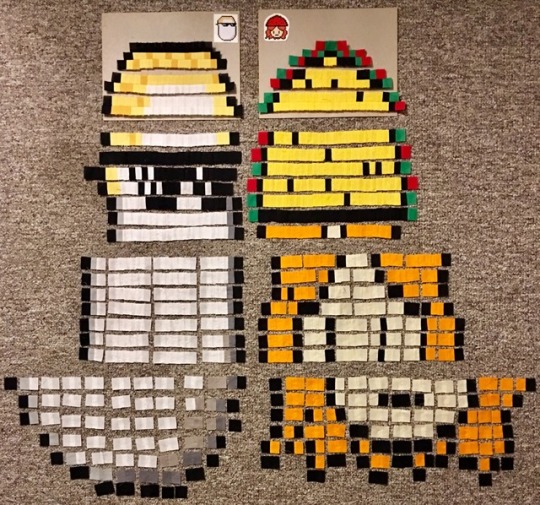
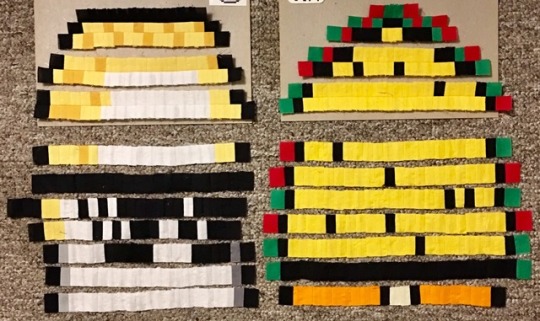
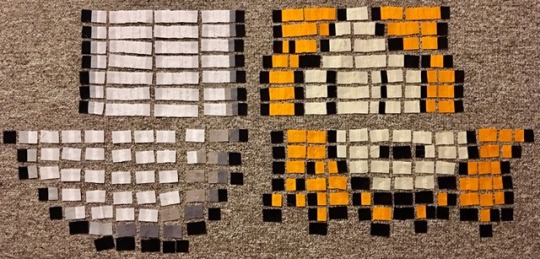
Recent pixel patchwork project happening, inspired by one of Proton Jon’s and Lucahjin’s aka @pudgemouthjin Twitch emotes. More patching up soon to follow. This is still very time-consuming, you had no idea. 😆
#ladyjuxtaposition talks#and sews#more pixel patchwork#because why not#this is still time consuming#protonjon#lucahjin#jonathan wheeler#reese dressler#twitch emotes#egg#taco#fabric pixels#cotton#handmade things#WIP#more patching up to follow#ladyjuxtaposition#sewn by ladyjuxtaposition
2 notes
·
View notes
Video
vimeo
Our hyper-reality allows for all knowledge to be within reach and in this setting we function with ease at the cost of being saturated - computers as extensions of ourselves. Anthologie is an over-saturated patchwork of connected worlds depicting our relation with the virtual one through the digital screens surrounding us. Here, the LCD is glorified as a portal, pulling the viewer across surrealistic and abstract dimensions revealing the medium of this VR experience: the pixel. Aesthetically inspired by both today’s render culture and the early years of computer graphics, the immaterial compositions of Baron Lanteigne are organized with maniacal precision to the maximalist song Midnight Special by Bobby Tank. It began as an experimental glitch art project with a strong focus on pixel manipulations.The title, Anthologie, emerged as I was collecting virtual worlds created over the last couple years which ended up embedded in this seamless trip. The resulting retro-futuristic animation takes on a dual nature. It can be consumed as a virtual reality or immersive projection. Visuals: Baron Lanteigne - http://bit.ly/2pCNQOp Music: Bobby Tank - http://bit.ly/2S2vEQx Curated by Not Like That - http://bit.ly/2HqCzib 2018 - 2019
0 notes
Video
vimeo
Our hyper-reality allows for all knowledge to be within reach and in this setting we function with ease at the cost of being saturated - computers as extensions of ourselves. Anthologie is an over-saturated patchwork of connected worlds depicting our relation with the virtual one through the digital screens surrounding us. Here, the LCD is glorified as a portal, pulling the viewer across surrealistic and abstract dimensions revealing the medium of this VR experience: the pixel. Aesthetically inspired by both today’s render culture and the early years of computer graphics, the immaterial compositions of Baron Lanteigne are organized with maniacal precision to the maximalist song Midnight Special by Bobby Tank. It began as an experimental glitch art project with a strong focus on pixel manipulations.The title, Anthologie, emerged as I was collecting virtual worlds created over the last couple years which ended up embedded in this seamless trip. The resulting retro-futuristic animation takes on a dual nature. It can be consumed as a virtual reality or immersive projection. Visuals: Baron Lanteigne - http://baronlanteigne.com/ Music: Bobby Tank - http://www.bobbytank.com/ Curated by Not Like That - http://notlikethatmusic.com/ 2018 - 2019
0 notes
Video
vimeo
Our hyper-reality allows for all knowledge to be within reach and in this setting we function with ease at the cost of being saturated - computers as extensions of ourselves. Anthologie is an over-saturated patchwork of connected worlds depicting our relation with the virtual one through the digital screens surrounding us. Here, the LCD is glorified as a portal, pulling the viewer across surrealistic and abstract dimensions revealing the medium of this VR experience: the pixel. Aesthetically inspired by both today’s render culture and the early years of computer graphics, the immaterial compositions of Baron Lanteigne are organized with maniacal precision to the maximalist song Midnight Special by Bobby Tank. It began as an experimental glitch art project with a strong focus on pixel manipulations.The title, Anthologie, emerged as I was collecting virtual worlds created over the last couple years which ended up embedded in this seamless trip. The resulting retro-futuristic animation takes on a dual nature. It can be consumed as a virtual reality or immersive projection. Visuals: Baron Lanteigne - http://bit.ly/2r75Z95 Music: Bobby Tank - http://bit.ly/QwCshG Curated by Not Like That - http://bit.ly/2W7WEgR 2018 - 2019
0 notes
Text
32 temporarily free and 31 on-sale apps and games to start the week
Another week is here. We have more app sales to get through today, including the fantastic Sleep as Android unlock key. As I've said before, if you're at all interested in sleep tracking, this is the app to get. Otherwise, it's a fairly standard selection today, so take a look through to see if anything catches your eye.
Free
Apps
Notes Pro $1.99 -> Free; Sale ends in 1 day
VGBAplus - Pro GAMEBOY Emulator (No Ads) $3.99 -> Free; Sale ends in 1 day
Lose Weight in 20 Days PRO $0.99 -> Free; Sale ends in 2 days
App lock & gallery vault $4.49 -> Free; Sale ends in 5 days
Email Pro $4.49 -> Free; Sale ends in 5 days
Extremely Deep Meditation (Pro) $3.99 -> Free; Sale ends in 7 days
Note Recognition - Convert Music into Sheet Music $3.49 -> Free; Sale ends in 7 days
Games
Hook $0.99 -> Free; Sale ends in 9 hours
PUSH $0.99 -> Free; Sale ends in 9 hours
Cannon Master VIP $0.99 -> Free; Sale ends in 2 days
CashKnight ( Soul Event Version ) $9.99 -> Free; Sale ends in 2 days
Maze Games - Teeter $0.99 -> Free; Sale ends in 2 days
V for Vampire $1.99 -> Free; Sale ends in 2 days
Artists Kids Coloring Book $0.99 -> Free; Sale ends in 3 days
Game School $0.99 -> Free; Sale ends in 3 days
Dead Bunker II HD $0.99 -> Free; Sale ends in 5 days
Dead Bunker 3: On a Surface $0.99 -> Free; Sale ends in 5 days
SliderMania Wonders Pro (Puzzles) $0.99 -> Free; Sale ends in 5 days
Sonny The Mad Man $1.99 -> Free; Sale ends in 5 days
TouchBlocks PRO $0.99 -> Free; Sale ends in 5 days
Icon packs & customization
3D Steampunk Travel Pro lwp $0.99 -> Free; Sale ends in 1 day
Piranha Aquarium 3D lwp $0.99 -> Free; Sale ends in 1 day
Art Alive: Night 3D Pro lwp $0.99 -> Free; Sale ends in 2 days
PARIS Wallpapers 4K Pro ( PARIS Backgrounds ) $0.99 -> Free; Sale ends in 3 days
Falco HD Wallpapers $0.99 -> Free; Sale ends in 4 days
Flat X Pixel - Icon Pack $0.99 -> Free; Sale ends in 4 days
MIUY 10 - Icon Pack $0.99 -> Free; Sale ends in 4 days
UX Experience S9 - Icon Pack $0.99 -> Free; Sale ends in 4 days
3D/4D HyperCube Color Style $2.99 -> Free; Sale ends in 5 days
Plix - Icon Pack $0.99 -> Free; Sale ends in 6 days
Space-X Watch Face Interactive $1.49 -> Free; Sale ends in 7 days
Slou - Icon Pack $1.99 -> Free; Sale ends in 7 days
Sale
Apps
Call Recorder Unlock $9.99 -> $5.99; Sale ends in 2 days
Sleep as Android Unlock $5.99 -> $2.99; Sale ends in 3 days
Advanced Sport Training Calendar $2.49 -> $0.99; Sale ends in 5 days
Call Notes Pro - Notes in Hand $3.99 -> $0.99; Sale ends in 5 days
CastBack Plus (Podcast Player) $1.99 -> $0.99; Sale ends in 5 days
Childhood diseases $2.99 -> $0.99; Sale ends in 5 days
Gastric Band Hypnosis,NLP&EFT $3.99 -> $0.99; Sale ends in 5 days
RemindCall - Call Reminder, Call Notes $3.99 -> $0.99; Sale ends in 5 days
Sun-based Fasting Tracker - Circa Fasting $2.99 -> $0.99; Sale ends in 5 days
Vape Tools Box [for true Geeks] $2.49 -> $0.99; Sale ends in 5 days
Barando VPN - Super Fast Proxy, Secure Hotspot VPN $7.99 -> $3.99; Sale ends in 6 days
Radio Alarm Clock++ (clock radio and radio player) $2.49 -> $1.25; Sale ends in 6 days
Password Manager SafeInCloud Pro $7.99 -> $4.99; Sale ends in 6 days
VGBAnext - GBA / GBC Emulator $4.99 -> $2.99; Sale ends in 6 days
Heroscape Guide $1.99 -> $0.99; Sale ends in 7 days
NetX Network Tools PRO $2.99 -> $0.99; Sale ends in 7 days
Planet Genesis 2 - solar system sandbox $2.49 -> $0.99; Sale ends in 7 days
QR-Barcode Scanner Pro $2.99 -> $0.99; Sale ends in 7 days
Games
Patchwork The Game $3.49 -> $2.29; Sale ends in 9 hours
1849 $4.99 -> $1.99; Sale ends in 2 days
Radium 2 $3.49 -> $1.49; Sale ends in 4 days
Warrior Chess $1.99 -> $0.99; Sale ends in 4 days
Dividing Fractions $2.49 -> $0.99; Sale ends in 5 days
Word Games PRO $1.99 -> $0.99; Sale ends in 5 days
Z.O.N.A Project X Redux $1.99 -> $0.99; Sale ends in 5 days
E30 M3 Drift Simulator PRO $2.49 -> $0.99; Sale ends in 6 days
Panzer Warfare: Tank Strike $3.99 -> $0.99; Sale ends in 6 days
The House of Da Vinci $4.99 -> $3.49; Sale ends in 6 days
Volt $1.99 -> $0.99; Sale ends in 7 days
Icon packs & customization
Amazing Land Pro $1.49 -> $0.99; Sale ends in 7 days
HSW lite pack $8.99 -> $3.99; Sale ends in 7 days
Read More
32 temporarily free and 31 on-sale apps and games to start the week was written by the awesome team at Android Police.
from Android Police – Android news, reviews, apps, games, phones, tablets https://ift.tt/2O5kzZJ
from Blogger https://ift.tt/2wZFCW9
https://ift.tt/2nVt4vu
0 notes